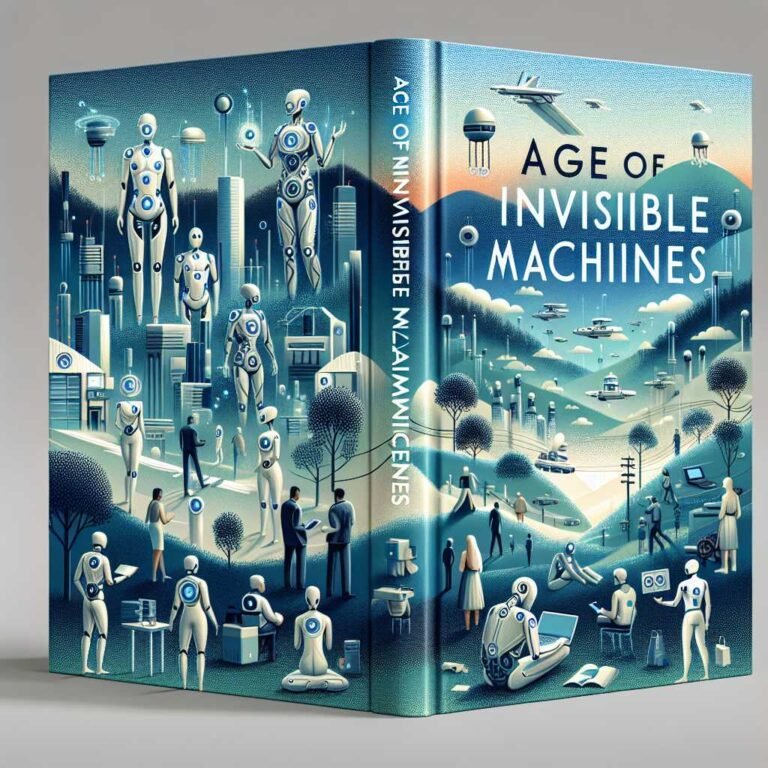Early Steps to Computer Level 1 by Michael Nelson: A Parent-Tested Review for Ages 2–5
If you’ve ever wondered whether a toddler can truly learn the “basics” of computers without touching a keyboard, you’re not alone. Parents and early‑years educators are asking the same question—especially as technology seeps into everyday life from smart speakers to preschool apps. Early Steps to Computer Level 1 by Michael Nelson steps into that debate with a simple promise: introduce foundational computer concepts to children ages 2–5 in a gentle, visual way.
In this review, I’ll unpack who this book is for, what it likely covers (and what it doesn’t), and how to use it effectively—even if you’re trying to keep screens to a minimum. I’ll also share practical reading tips, educator insights, and a few activity ideas that extend learning beyond the page. By the end, you’ll know whether Early Steps to Computer Level 1 deserves a spot on your shelf or in your classroom basket.
What Is “Early Steps to Computer Level 1”? Key Details and First Impressions
Michael Nelson’s Early Steps to Computer Level 1 is designed for the youngest learners—ages 2–5—who are just beginning to notice devices and ask questions like “What’s this button?” or “How does this turn on?” The book uses colorful pictures and familiar objects to make early computer ideas feel friendly and concrete. At 76 pages, published in English, and sized at 15.24 x 0.46 x 22.86 cm, it’s a manageable book for small hands and adult-led reading.
The main promise here isn’t to teach typing or coding. Instead, it’s to build vocabulary and concepts: think “computer,” “mouse,” “screen,” “on/off,” and “click” or “tap”—all in age-appropriate language. For toddlers and preschoolers, that’s huge. Early exposure builds confidence, and vocabulary is the first step toward understanding.
Curious to peek inside before you decide? Check it on Amazon.
Who It’s For (and Who Might Want to Wait)
- Perfect for: Parents, caregivers, and preschool teachers who want a screen‑light way to introduce technology.
- Age fit: Strongest for 3–5, but 2‑year‑olds can enjoy the pictures and simple labels with your guidance.
- Learning context: Best used during short, curiosity-led reading sessions—5 to 10 minutes at a time.
If you’re hoping for deeper “how computers work” explanations or coding activities, this isn’t that. It’s an early literacy tool for technology—think of it as a first glossary and concept builder.
Why Teach Computer Basics This Early?
The goal isn’t to rush children into screens. It’s to demystify technology and build healthy, informed habits. When preschoolers understand a few simple concepts—what a computer is, what a mouse does, how to be gentle with a device—they’re less likely to feel overwhelmed later.
Here’s why that matters: – Vocabulary first: Children learn new ideas through words and pictures. A book like this seeds the language they’ll hear in kindergarten and beyond. – Confidence and safety: Understanding what a power button does and that you should ask before using a device builds respectful tech habits. – Real‑world relevance: Kids notice laptops, tablets, and smart TVs everywhere. This book gives them age‑appropriate context without relying on screen time.
If you’re worried about screen use, you’re in good company. The American Academy of Pediatrics recommends thoughtful, limited, and co‑viewed media for young children. A book‑first approach to computer literacy aligns well with those guidelines.
What’s Likely Inside: Foundational Concepts for Ages 2–5
The official descriptions don’t list a detailed table of contents, so let’s set expectations based on age‑appropriate practice and the book’s stated goals. For toddlers and preschoolers, the sweet spot isn’t “how a CPU works.” It’s:
- Naming hardware: Computer, keyboard, mouse or touchpad, screen, speakers.
- Simple functions: On/off, click/tap, open/close, volume.
- Everyday uses: Watching a video, viewing photos, asking a question, drawing a picture.
- Care and respect: Handle gently, ask an adult, keep food and drinks away.
- Early digital citizenship: Share, ask for help, be kind—even in digital spaces.
Think of it as “pre‑computer literacy.” It’s about recognition and routine, supported by bright, familiar images. The pictures are the teaching engine; your voice and questions are the fuel.
Strengths: Visuals, Simplicity, and Developmental Fit
Three things stand out as strengths for a book in this niche:
1) Visual storytelling
At ages 2–5, pictures carry the load. Simple, colorful images paired with direct labels help anchor new words. It also makes the book accessible for children who can’t read yet but love to point and name.
2) Right‑sized chunks
Short captions, large images, and predictable pacing make it easy to read in bursts—ideal for wiggly toddlers with short attention spans.
3) Adult‑friendly prompts
Books like this shine when an adult asks questions: “Which one is the keyboard?” “Can you show me the power button?” “What should we do before turning this on?” Even if prompts aren’t printed on the page, the content invites conversation.
If this sounds like the right fit for your preschooler, you can Shop on Amazon to see formats and reviews.
Why a Book (Not an App)?
It may seem ironic to learn about computers from paper. But early childhood experts like NAEYC emphasize balanced, intentional use of technology in the early years. A physical book invites snuggled reading, eye contact, and back‑and‑forth talk—all key for language development. Later, when you’re ready to introduce a device, your child already has the words and expectations they need.
Where It Could Go Further
A few areas where Early Steps to Computer Level 1 may leave some readers wanting more:
- Detailed contents: Without a clear topic list in public descriptions, it’s hard to know exactly what’s covered and what’s not.
- Parent guidance: Many parents appreciate built‑in “ask this” or “try this” prompts. If the book doesn’t include them, you’ll want to add your own (I include ideas below).
- Next steps: As children outgrow basic naming, families will want a Level 2 that introduces very simple cause‑and‑effect or sequence thinking.
None of these are dealbreakers for an introductory book, but they’re good to know upfront. Think of this as Step 1 in a longer journey.
How to Read It with Your Child: Simple Routines That Work
You don’t need to be “techy” to use this book well. The magic is in conversation and repetition. Try these approaches:
- Start with a picture walk. Look at the images and ask your child what they notice before reading any words.
- Play “I spy” with parts of the computer. “I spy the mouse. Can you find it?”
- Ask just‑right questions. “What do we do before we touch the computer?” “Where does sound come out?”
- Connect to real life. Show a harmless device at home (like a keyboard) and match it to the picture.
- Emphasize care and consent. “We always ask before using Mom’s laptop. That’s being respectful.”
- Keep it short and sweet. Two or three pages per sitting is plenty for a toddler.
Want to try it yourself and follow along with the activities above? Buy on Amazon.
Try These Unplugged Extension Activities
- Sort household items into “computer/not computer” baskets.
- Build a pretend computer from a cardboard box; label the “screen,” “keyboard,” and “power button.”
- Make a “computer rules” poster using stickers and drawings: ask first, clean hands, gentle touches.
- Play “sequence games”: first we turn it on, then we open an app, then we close it, then we turn it off.
- Create a sound hunt: find where sound comes from in different devices (speaker, headphones).
These activities reinforce vocabulary, sequence thinking, and care for tools—all without extra screen time.
Buying Tips, Formats, and Availability
For this age group, print usually beats digital. Young children respond strongly to page‑turning, pointing, and shared lap reading. The 76‑page paperback format and modest dimensions make it easy to hold, stack, and revisit. If a Kindle edition exists, consider it for travel or to zoom in on images, but expect to get the most mileage from a physical copy in your home or classroom library.
Ready to order or compare regional shipping options? View on Amazon.
A few quick tips before you buy: – Look for region availability (UK, Australia, Canada) to save on shipping time and cost. – Check the publication date and edition to make sure you’re getting the most current version. – If you’re a teacher, consider a second copy for your classroom’s tech or STEM corner.
How It Fits with Early STEM and Digital Citizenship
You don’t need to jump straight to coding to develop computational thinking. For ages 2–5, the building blocks are noticing patterns, following sequences, and using words to describe what tools do. Books like this one fit beautifully alongside “unplugged” resources.
When your child is a little older (typically 5+), you can layer in playful tools like ScratchJr or the unplugged activities from Code.org. Pair what they see in the book with simple “first, then” sequences in the real world, and you’ll have a rock‑solid foundation for later digital learning. If you’d like a broad vision of skills students build over time, browse the ISTE Standards for Students; it’s a helpful map for long‑term growth.
Classroom Use: Teacher Tips and Center Ideas
If you’re an educator, here’s how to integrate Early Steps to Computer Level 1 into your weekly plan:
- Use it as a morning circle read‑aloud during a “tools we use” unit.
- Set up a technology center with a nonworking keyboard, mouse, headphones, and a “gentle hands” poster.
- Pair each reading with a hands‑on mini‑task: practice wearing and removing headphones, plugging in a pretend USB stick, or rotating a mouse left/right.
- Invite children to draw a computer and label two parts. Dictate their words if they can’t write yet.
- Rotate in digital citizenship lessons: sharing turns, asking for help, and being kind online (age‑appropriately). For extra guidance, see Common Sense Media’s early digital citizenship resources.
These small routines build confidence and demystify classroom devices long before formal computer time begins.
Value for Money: Is It Worth It?
For most families and preschool classrooms, yes—if your goal is gentle exposure, vocabulary building, and tech confidence without added screen time. The biggest value is in repetition; expect to read it many times in short bursts. The trade‑off is that advanced learners may outgrow the book quickly, so think of it as a one‑ or two‑year resource.
See today’s price and delivery estimates here: See price on Amazon.
Alternatives and Complements
Depending on your child’s age and interests, consider these complementary resources:
- Unplugged activities from Code.org for sequence thinking.
- Early‑years tech guidance from NAEYC.
- Media balance tips from the American Academy of Pediatrics.
- For 4–7 year olds, story‑driven STEM books (e.g., logic and problem‑solving picture books) to bridge into later tools like ScratchJr.
This book works best as the first rung on a ladder—with hands‑on play below it and simple digital tools above it.
Who Should Skip It?
If your child is already fluent in basic computer parts and routines—or if you’re seeking more depth (e.g., step‑by‑step tasks or cause‑and‑effect experiments)—you might want a more advanced early STEM title. Likewise, if you prefer open‑ended storybooks to concept labeling at this stage, you may not get as much mileage from a vocabulary‑first approach.
Final Buying Considerations
To recap, this is a print‑first, adult‑guided resource for ages 2–5 that delivers foundational vocabulary and confidence around computers in short, visual bursts. Pair it with conversation, household “show and tell,” and unplugged play to get the most value.
If you’re ready to move forward but want to scan customer photos, format options, and stock by region, Shop on Amazon is the simplest next step.
Frequently Asked Questions
Is 2 years old too young to learn about computers?
Not at all—if you keep it simple, concrete, and screen‑light. For toddlers, the goal is naming (“This is a keyboard”), recognizing (“Where’s the screen?”), and practicing care (“We touch gently”). A picture book is perfect for that.
How much screen time is recommended for preschoolers?
Recommendations vary by age and family values, but the American Academy of Pediatrics emphasizes limited, high‑quality media and co‑viewing with an adult. Books like Early Steps to Computer Level 1 let you build tech vocabulary without adding screen time.
Can I use this in a preschool classroom?
Yes. It works well during circle time and in a technology center. Pair it with a nonworking keyboard and headphones, and add simple routines like “ask before using” and “gentle hands.”
Does the book teach coding?
No. It’s a pre‑literacy, foundations‑of‑technology book. For early coding‑style thinking, try unplugged sequencing games first, then transition to beginner‑friendly tools like ScratchJr when your child is closer to 5+.
Is the Kindle edition worth it?
If you need portability or zoom‑in visuals, a digital edition can help. But for ages 2–5, a physical book generally supports better focus, pointing, and shared reading.
How do I know if my child is ready?
Look for curiosity cues: pointing at devices, asking “what’s that?”, or mimicking adult behavior. If they enjoy naming games and short picture walks, they’re ready for a book like this.
How can I reinforce safety and care?
Create a simple family or classroom “tech rules” poster: ask first, clean hands, gentle touches, and take turns. Revisit those rules whenever you read the book.
What should I read after this?
Try early STEM picture books that explore patterns, sequences, or problem‑solving. Then, when appropriate, move to unplugged coding activities or beginner apps with strong adult supervision.
The Bottom Line
Early Steps to Computer Level 1 is a gentle, age‑appropriate on‑ramp to technology for toddlers and preschoolers. It doesn’t pretend to be a coding curriculum, and that’s the point: it meets young learners where they are—with colorful visuals, simple words, and opportunities for real conversation. If you’re building a home or classroom library that supports confident, respectful tech use, this book earns a spot. Want more early‑years tech tips and book reviews like this? Stick around—subscribe for future guides and hands‑on activity ideas.
Discover more at InnoVirtuoso.com
I would love some feedback on my writing so if you have any, please don’t hesitate to leave a comment around here or in any platforms that is convenient for you.
For more on tech and other topics, explore InnoVirtuoso.com anytime. Subscribe to my newsletter and join our growing community—we’ll create something magical together. I promise, it’ll never be boring!
Stay updated with the latest news—subscribe to our newsletter today!
Thank you all—wishing you an amazing day ahead!
Read more related Articles at InnoVirtuoso
- How to Completely Turn Off Google AI on Your Android Phone
- The Best AI Jokes of the Month: February Edition
- Introducing SpoofDPI: Bypassing Deep Packet Inspection
- Getting Started with shadps4: Your Guide to the PlayStation 4 Emulator
- Sophos Pricing in 2025: A Guide to Intercept X Endpoint Protection
- The Essential Requirements for Augmented Reality: A Comprehensive Guide
- Harvard: A Legacy of Achievements and a Path Towards the Future
- Unlocking the Secrets of Prompt Engineering: 5 Must-Read Books That Will Revolutionize You







